
Secretary for Transport and Logistics

February 15, 2025
The Chinese New Year just passed and I hope all of you had enjoyed a wonderful reunion with your loved ones. During this festive season, I also shared with my family and friends a variety of delicacies from around the world, including in-season Chilean cherries. I have previously introduced how the temperature-controlled logistics at Hong Kong International Airport deliver delicacies from around the world to Hong Kong and in addition to air cargo, many fruits arrived in Hong Kong through our container terminals and some are eventually transferred to various cities in mainland China.
Efficient and Flexible Cold Chain Logistics
Hong Kong's port have a lot to offer: we have a highly international heritage and a network that connects to everywhere around the globe; we are backed by the vast market of our motherland and are close to the Guangdong-Hong Kong-Macao Greater Bay Area's (GBA) 86 million population. More importantly, in response to challenges such as geopolitical environments and intense regional competition, Hong Kong possesses the DNA to adapt and evolve.
The advantages of Hong Kong's container terminals are best understood by their operators and representatives from Modern Terminals and Hongkong International Terminals have shared their insights on how to find breakthroughs in Hong Kong's shipping industry.
Hong Kong container terminals are known for the comprehensive cold-chained logistics services. Kwai Tsing Container Terminal boasts 7,800 refrigerated container plugs, which is the highest in South China. It also offers an efficient "Hotbox" service, which allows cargo to be offloaded from ships and head for destinations in as little as 15 minutes. Furthermore, our highly internationalised environment and status as a free port enable cargo owners to seamlessly transfer goods to other markets at any time.
Taking the example of Chilean cherries, which are very popular in both mainland China and Hong Kong around the Chinese New Year, exporters can transport these cherries to Hong Kong in 21 days, and transfer them to major fruit markets in South China with just a few extra hours. If there are sudden change in market decision, they can always utilise our cold chain storage facilities and find new buyers. This flexible service that meets customer demands embodies the very essence of the Hong Kong spirit. The "Cherry Express" is just one of the stunning highlights of Hong Kong’s high-end port brand, alongside the intelligent development of Hong Kong's port and its diverse, high-quality services. As a free port, Hong Kong's advantages of fast customs clearance and high efficiency can also be extended to other cold chain goods, such as durians in summer and high-value frozen meats.
We have been actively promoting collaboration within the GBA and other provinces, striving to establish a comprehensive "rail-sea-land-river" intermodal transport system that extends the hinterland of the Hong Kong port further afield, seeking more sources of cargo. For example, the "Chongqing-Shenzhen-Hong Kong scheduled rail-sea service" launched last year provides an average of three freight trains weekly from Chongqing to Yantian, where goods arrived in Hong Kong via barge, allowing products from Chengdu and Chongqing to reach Hong Kong within three days. We have also imitated daily service with the Beibu Gulf in Guangxi. These are all examples of how we adapt and evolve to seek new growth opportunities for our port.

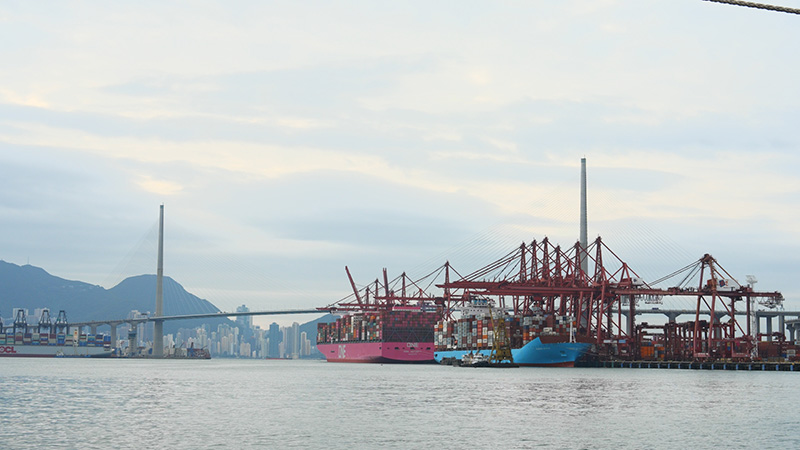
Horace Lo, Group Managing Director of Modern Terminals Limited, stated that Hong Kong has the potential to become a cold chain logistics distribution centre for the GBA.
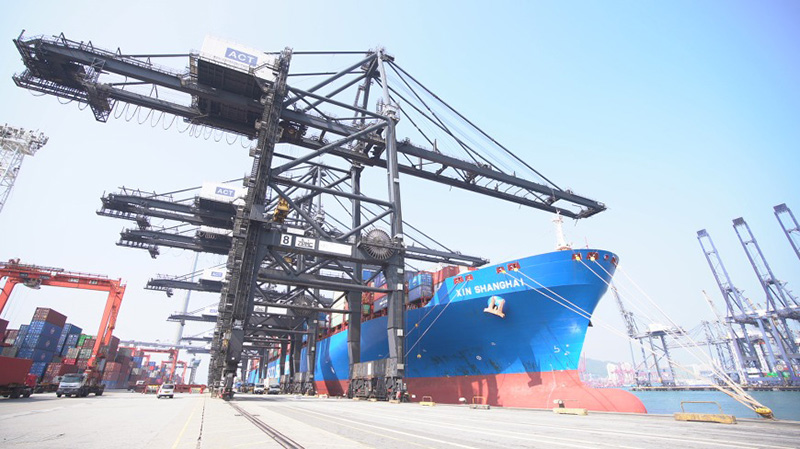
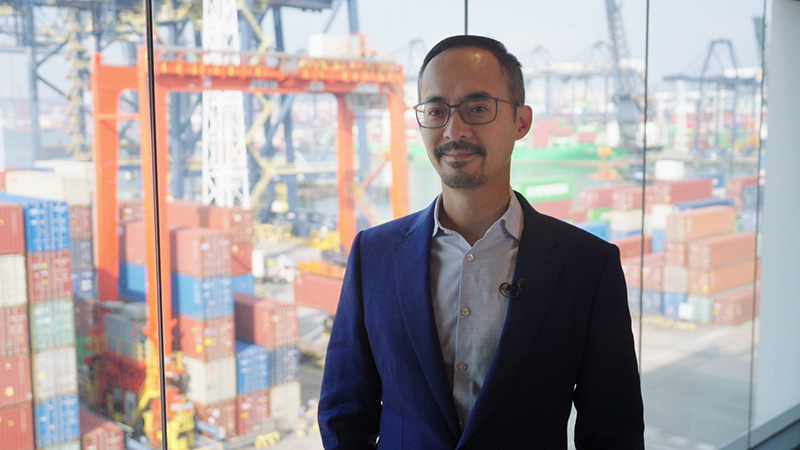
Ivor Cho, Managing Director of Hongkong International Terminals, noted that the versatility of Hong Kong's container terminals enables customers to arrange their sales strategies more flexibly.
Multiple Choices of Green Fuels
Our port took an important step yesterday by completing Hong Kong's first ship-to-ship liquefied natural gas (LNG) bunkering in local waters. The International Maritime Organization set global emission reduction strategies for the shipping industry, requiring ships to use various types of green fuels in the future, including LNG, green methanol, green ammonia, hydrogen, and bio-diesel. We are committed to establishing Hong Kong as a green maritime fuel bunkering centre, which not only creates economic growth for the future of shipping but also contributes to environmental protection.
Compared to traditional maritime fuels, using LNG can achieve near-zero sulfur emissions while reducing nitrogen oxide emissions by about 85% and carbon dioxide emissions by 25%. The successful completion of the first local ship-to-ship LNG bunkering by Kunlun Energy yesterday at South Cheung Chau Anchorage involved the transfer of 2,200 tons of natural gas over approximately seven hours. This operation is just one step in the development of Hong Kong's maritime green fuel bunkering. The types of green maritime fuels are diverse, and our green maritime fuel bunkering is flexible, capable of pairing different types of fuels with ships and providing shipping companies with multiple fuel options. For example, local industries can already supply B24 bio-diesel (diesel blended with 24% bio-diesel), and Chimbusco Pan Nation Petro-Chemical Co. plans to bunker 5,500 tons of B24 bio-diesel fuel in Hong Kong waters next week, setting a new record for the largest single bunkering of maritime bio-diesel fuel in China.
Yesterday's first LNG bunkering in Hong Kong waters is just the beginning. We will continue to work with the industry to make Hong Kong a green maritime centre. Hong Kong is the most internationalised city in China and one of the freest economies in the world. I hope to establish Hong Kong as a trading centre for green maritime fuels, utilising our robust financial system and legal framework to demonstrate to the world that Hong Kong is the top choice for relevant enterprises to expand their business.
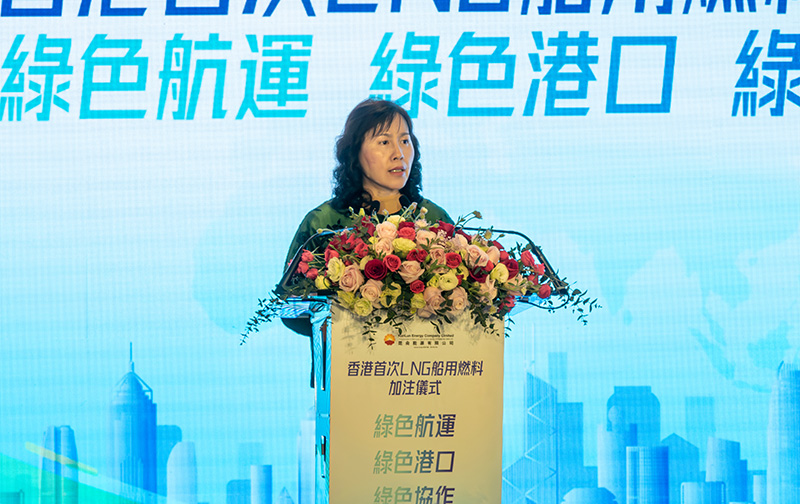
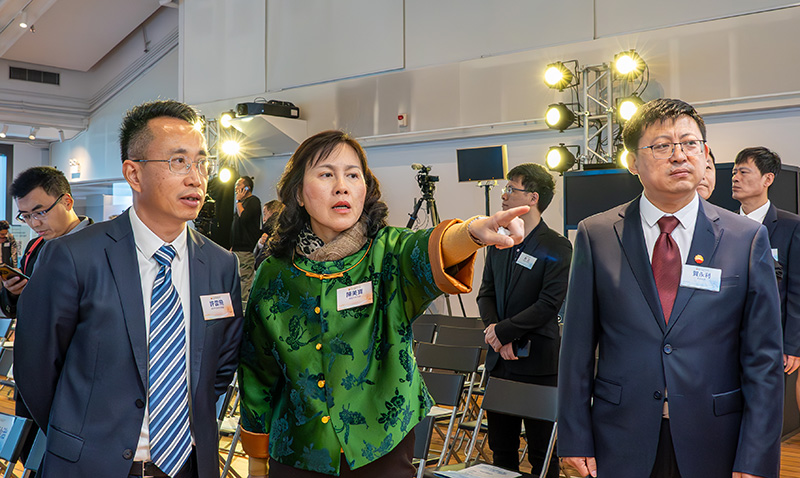
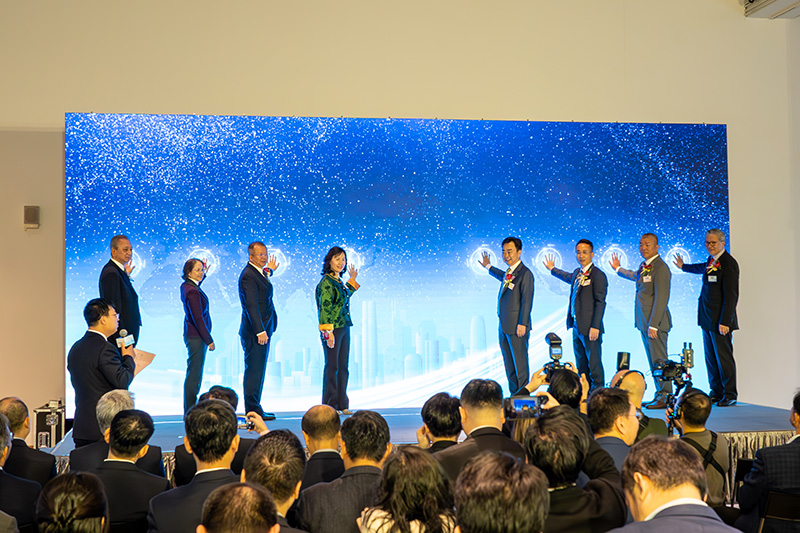
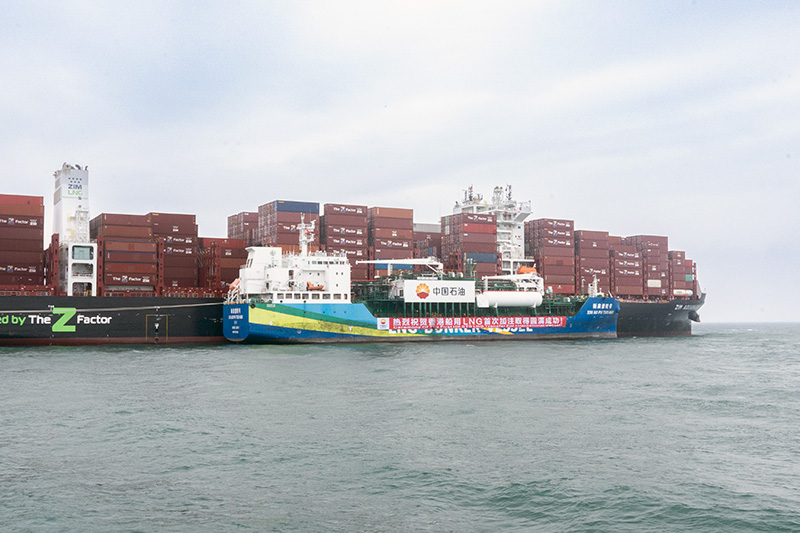
Yesterday, Hong Kong conducted its first ship-to-ship liquefied natural gas Bunkering, committing to establishing Hong Kong as a green maritime fuel bunkering centre.
Hong Kong port is closest to international shipping routes within the GBA. In terms of bunkering volume, Hong Kong ranked first in the GBA, second in the country, and seventh globally in 2023. We are formulating Code of Practice for methanol bunkering and will invite industry stakeholders to submit proposals for developing green methanol storage facilities on reserved land in Tsing Yi South. These initiatives will help position Hong Kong as the preferred green maritime fuel bunkering centre in the region.
Enhancing Competitiveness through enhancing quantity and quality
The port is a vital asset for Hong Kong and the foundation of our success. The Government has been working hand in hand with the industry in facing different challenges, embodying Hong Kong's spirit of innovation and change to seek new economic growth. We will strengthen port competitiveness through enhancing quantity and quality. We will enhance quantity in three aspects namely, expanding in emerging markets and new shipping routes; increasing cargo volume through enhanced regional cooperation; and increasing transshipment business. For quality, we will continue to leverage on Hong Kong's highly internationalised advantages, and advance ourselves by digitisation, going green, and going smart. Even if international ocean liners reorganise their services for commercial reasons, we are well prepared and committed to equipping ourselves to make us indispensable. The Government will continue to consolidate Hong Kong's international position through various measures, including completing the construction of a digital port community system by the end of 2025, establishing Hong Kong as a high-quality green maritime fuel bunkering and trading centre, and promoting Hong Kong as a smart port. To succeed, we must strengthen our foundations, and I believe that with the joint efforts of the Government and the industry, we can innovate and achieve the vision of attracting cargos and ships from all around the world.